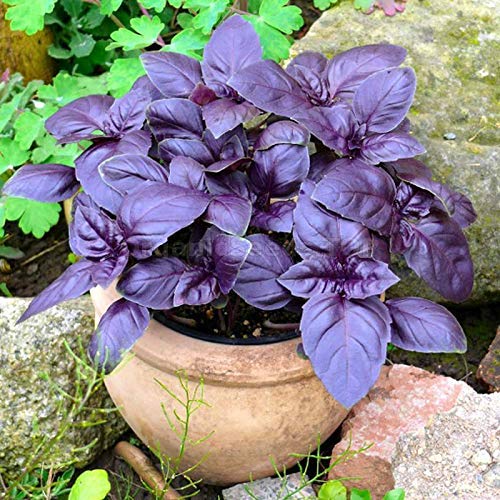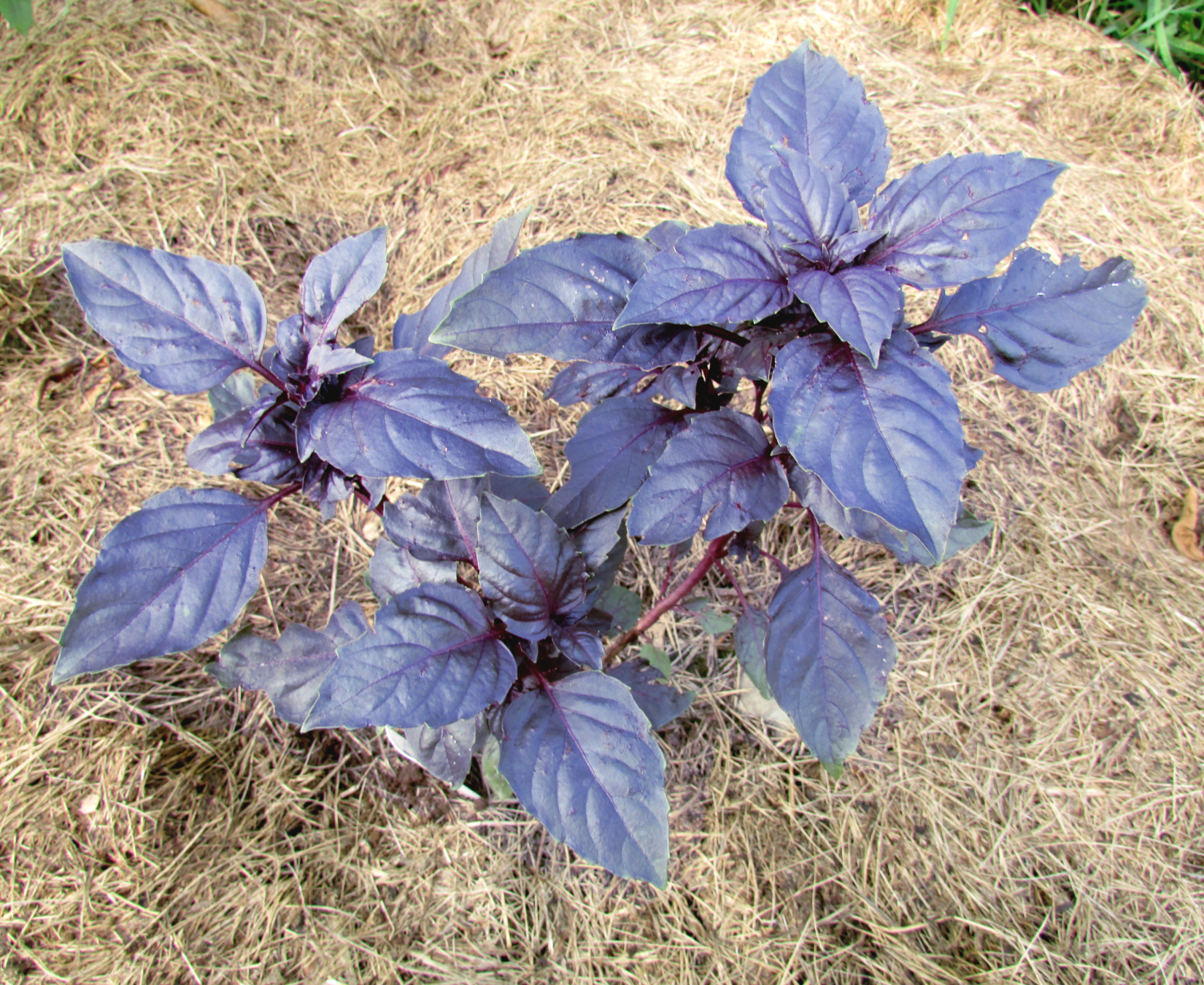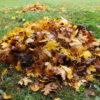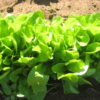Description
Basil – Purple Dark Opal – Purple Dark Opal Basil
50 Seeds per pack
Annual Herb
Days to Maturity: 60–90 Days
Sun Requirements: Full Sun to Partial Shade
Botanical Name: (Ocimum basilicum)
Bred at the University of Connecticut in the 1950s, Purple Dark Opal Basil was the result of a collaboration between Professor Joseph M. Lent and John Scarchuck. Their goal was to improve upon the uneven coloration of earlier purple varieties by refining a Turkish basil with promising deep tones. Their efforts paid off—this vibrant, glossy-leaved variety was awarded the bronze medal by All-America Selections in 1962 and has been a garden favorite for decades.
A compact plant reaching 12–18″ in height, Purple Dark Opal Basil stands out with its striking dark purple leaves, touched occasionally by flecks of green on younger growth. The serrated foliage is glossy and veined with rich red, set against dark red stems and topped with delicate lilac-colored blossoms. Slow to bolt and easy to care for, it’s well suited to containers, borders, and landscape beds, where it brings rich color and ornamental beauty.
The flavor of Purple Dark Opal Basil is mild and sweet, with a gentle spiciness that sets it apart from standard green basils. Great when used fresh, it shines in salads, sandwiches, and pasta, and is a beautiful, flavorful garnish. Best added it at the end of cooking to preserve its delicate taste. The edible flowers are equally useful in the kitchen, adding subtle vegetal flavor to a variety of dishes.
Purple Dark Opal Basil provides a good source of vitamins K and C, beta-carotene (a precursor to vitamin A), calcium, potassium, magnesium, and iron. Long appreciated for its digestive support, anti-inflammatory properties, and ability to soothe minor skin irritations, Purple Dark Opal Basil earns a place in any garden!
Planting Instructions for Basil – Purple Dark Opal Seeds
When to Plant:
Start Purple Dark Opal Basil seeds indoors 3–4 weeks before your last expected frost date to get a jump on the season. In warm climates, you can also direct sow outdoors after all danger of frost has passed and nighttime temperatures stay consistently above 50°F (10°C). For a continuous harvest, sow new batches every 3–4 weeks through midsummer.
Where to Plant:
Purple Dark Opal Basil thrives in full sun and needs at least 6 hours of direct light daily. Choose a warm, sheltered location with well-drained, nutrient-rich soil. If growing in containers, use a high-quality potting mix and ensure your pot has drainage holes. Raised beds and greenhouses are also excellent options, especially in cooler regions.
How to Plant:
Sow Purple Dark Opal Basil seeds ⅛″ (3 mm) deep either in seed trays or directly into garden soil. For direct sowing, space seeds 6–8″ apart and later thin seedlings to 10–12″ once they’ve grown a few sets of leaves. Indoors, transplant seedlings once they reach 3–4″ tall and have at least two sets of true leaves. Before transplanting outdoors, harden off the seedlings by gradually acclimating them to outdoor conditions over the course of 7–10 days. Begin by placing them outside in a sheltered, shady spot for a few hours each day, slowly increasing their time outdoors and exposure to direct sunlight and wind. This process helps reduce transplant shock and ensures the plants adjust well to life outside, especially if moving from a warm indoor space to variable spring weather.
Growing Tips:
Water regularly but avoid soggy soil. Purple Dark Opal Basil appreciates steady moisture, especially in containers, but hates wet feet. Use mulch to conserve soil moisture and suppress weeds. Avoid overhead watering to prevent fungal issues. Pinch off the top set of leaves regularly to encourage bushier growth and delay flowering. Apply a diluted liquid fertilizer every few weeks or work in compost to keep plants vigorous. Afternoon shade can help prolong harvest in hot climates.
Harvesting:
Begin harvesting once the plants are 6–8″ tall. Pick leaves regularly, starting from the top down, to promote branching and ongoing leaf production. Cut just above a leaf node to encourage new shoots. Remove any flower buds promptly unless you’re saving seed, as flowering reduces leaf quality. Toward the end of the season, harvest entire stems before the first frost is expected. You can use fresh leaves immediately or preserve them for later use.
Storage:
Use Purple Dark Opal Basil fresh for the best flavor. Store short-term by placing stems in a glass of water at room temperature. Avoid refrigeration, as cold temperatures cause the leaves to blacken. For long-term use, preserve Purple Dark Opal Basil by freezing or drying. To freeze whole leaves, blanch them in boiling water for 3–4 seconds, transfer to an ice bath, dry thoroughly, then pack flat in plastic wrap and seal in a freezer bag for up to 3 months. You can also chop fresh Purple Dark Opal Basil and mix with olive oil, then spoon into ice cube trays, freeze solid, and store cubes in resealable bags—ideal for sauces, soups, or vinaigrettes. For drying, use a dehydrator at 95°F (35°C), an oven at its lowest temperature with the door propped open, or hang bundles in a dry, well-ventilated place. Once dried and crumbly, store leaves in airtight containers away from light. Use within 6 months for best flavor.
Companion Plants:
Purple Dark Opal Basil grows well with tomatoes, peppers, lettuce, chamomile, and oregano. Avoid planting near rue or sage, which may inhibit its growth.
Seed Saving:
To save seeds, allow a few basil plants to flower and go to seed. Once seed heads dry and turn brown on the plant, cut and store them in a paper bag. Allow them to dry fully in a cool, shaded area before threshing. Store cleaned seeds in a labeled envelope in a cool, dry place for next season. We also offer seed-saving envelopes for sale which include a designated space to write the variety name and harvest date, making them a convenient option for organized storage.
FAQ:
What is the historical or notable background of Purple Dark Opal Basil?
Purple Dark Opal Basil was developed in the 1950s at the University of Connecticut by Professor Joseph M. Lent and John Scarchuck. Their goal was to perfect the color consistency of purple basil by refining a Turkish variety. It won a bronze medal from All-America Selections in 1962.
How would you describe the flavor of Purple Dark Opal Basil?
Purple Dark Opal Basil offers a mild, sweet flavor with a gentle spiciness. Unlike standard green basil, it has a more delicate taste that complements fresh dishes. Because of this, it’s best added at the end of cooking to preserve its flavor.
What does Purple Dark Opal Basil look like, and what are its growing habits?
A compact plant reaching 12–18″ in height, Purple Dark Opal Basil features striking dark purple, serrated leaves that are glossy and veined with rich red, occasionally flecked with green on young growth. These vibrant leaves grow along dark red stems, which are topped mid-season with delicate lilac-colored blossoms.
When can I harvest Purple Dark Opal Basil?
You can begin harvesting Purple Dark Opal Basil once the plant is well established, usually around 6–8 inches tall with several sets of leaves. Choose vibrant, healthy leaves and avoid any that are discolored or damaged. Regular harvesting encourages bushier growth and higher yield. For the best flavor, pick leaves before the plant starts to flower, though you can continue harvesting throughout the season as needed.
When is the best time to plant Purple Dark Opal Basil?
Start seeds indoors about 6 weeks before the last frost or direct sow after the danger of frost has passed. Basil prefers warm soil (65–85°F) and full sun to partial shade.
What are common culinary uses for Purple Dark Opal Basil?
Purple Dark Opal Basil is best used fresh in salads, sandwiches, and pasta dishes, where its mild, sweet flavor stands out. Its deep purple leaves also make it a striking garnish. The edible flowers have a subtle vegetal flavor and can be used similarly in fresh dishes.
What’s the best way to store Purple Dark Opal Basil after harvest?
To store fresh Purple Dark Opal Basil short-term, wrap the leaves in a damp paper towel and place them in a sealed bag or container in the refrigerator. For long-term use, finely chop the leaves, pack them into ice cube trays, top with olive oil, and freeze—perfect for adding to cooked dishes. You can also dry the leaves by air drying on a clean surface, using a dehydrator set to 95–115°F (35–46°C), or placing them in a low-temperature oven. Once fully crisp, crumble and store them in an airtight container.
What nutrients does Purple Dark Opal Basil provide?
It’s rich in vitamins K and C, beta-carotene, calcium, potassium, magnesium, and iron—supporting everything from bone health to inflammation reduction.
Does Purple Dark Opal Basil have any ornamental or landscape value?
Absolutely! Its striking purple foliage and soft lilac blooms make it a standout in containers, borders, and decorative garden beds.



















Patricia Q. (verified owner) –
Awesome seed and seed company
Elizabeth K. (verified owner) –
Can we just say gorgeous and YUM!
Christine (verified owner) –
Amazing company!